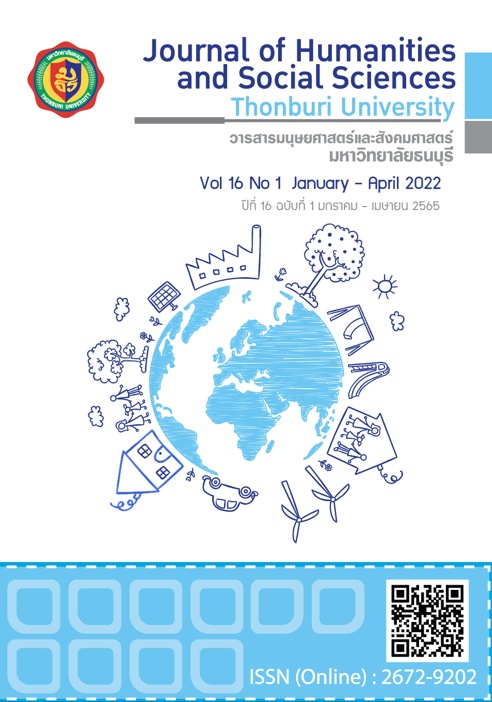ความสัมพันธ์ระหว่างการใช้รูปแบบการฝึกทักษะทางจิตวิทยาของนักกีฬามหาวิทยาลัย
Main Article Content
บทคัดย่อ
การวิจัยนี้มีวัตถุประสงค์ (1) เพื่อเปรียบเทียบรูปแบบการฝึกทักษะทางจิตวิทยาระหว่างเพศชายและหญิง ทีมและนักกีฬาบุคคล (2) เพื่อหาความสัมพันธ์ระหว่างการใช้ทักษะทางจิตวิทยาประเภทต่างๆ กลุ่มตัวอย่างประกอบด้วยนักกีฬามหาวิทยาลัยบูรพาที่เข้าร่วมการแข่งขันกีฬามหาวิทยาลัยแห่งประเทศไทย จำนวน 174 คน เครื่องมือที่ใช้เก็บข้อมูลเป็นแบบสอบถามประกอบด้วยคำถามทั้งหมด 30 ข้อ (ค่าสัมประสิทธิ์อัลฟาของครอนบาค .85) วิเคราะห์ข้อมูลโดย t-test และ Pearson's Product Moment Correlation ผลการวิจัยมีดังนี้ การใช้ทักษะทางจิตวิทยาระหว่างเพศชายกับเพศหญิง และระหว่างนักกีฬาประเภททีมและบุคคลมีความแตกต่างกันอย่างไม่มีนัยสำคัญทางสถิติ, มีความสัมพันธ์เชิงบวกอย่างมีนัยสำคัญทางสถิติที่ระดับ .01 ระหว่างการใช้ทักษะการตั้งเป้าหมาย การพูดกับตนเอง การรวบรวมสมาธิ การจินตภาพ การควบคุมการหายใจ และการผ่อนคลายกล้ามเนื้ออย่างต่อเนื่อง
Article Details
References
Anderson, M. B. (Ed.). (2000). Doing sport psychology. Champaign, IL, US: Human Kinetics.
Bebetsos, E., & Antoniou, P. (2003). Psychological skills of Greek badminton athletes. Perceptual and Motor Skills. 97(3f): 1289-1296.
Cumming, J., & Hall, C.R. (2009). Athletes’ use of imagery in the off-season. The Sport Psychologist, 16, 160-172.
Garza, D. L., & Feltz, D. L. (1998). Effects of selected mental practice on performance, self-efficacy, and competition confidence of figure skaters. Sport Psychologist. 12(1): 1-15.
Hamilton, R. A., Scott, D., & MacDougall, M. P. (2007). Assessing the effectiveness of self-talk interventions on endurance performance. Journal of Applied Sport Psychology. 19: 226-239.
Haney, C. J. (2004). Stress-management interventions for female athletes: Relaxation and cognitive restructuring. International Journal of Sports Psychology. 35: 109-118.
Hardy, J., Hall, C. R., & Alexander, M. R. (2001). Exploring self-talk and affective states in sport. Journal of Sports Sciences. 19: 469-475
Hardy, J., Hall, C. R., & Hardy, L. (2004). A Note on Athletes' Use of Self-Talk, Journal of Applied Sport Psychology. 16(3): 251-257, DOI:10.1080/10413200490498357
Hardy, L., Jones, G., & Gould, D. (1997). Understanding psychological preparation for sport: Theory and practice of elite performers. London, UK: John Wiley & Sons Ltd.
Harwood, C., Cumming, J., & Fletcher, D. (2004). Motivational profiles and psychological skills use with in elite youth sport. Journal of Applied Sport Psychology. 16(4): 318-332.
Hatzigeorgiadis, A., Zourbanos, N., & Theodorakis, Y. (2007). The moderating effects of self-talk content on self-talk functions. Journal of Applied Sport Psychology. 19: 240-251.
Hatzigeorgiadis, A., Zourbanos, N., & Theodorakis, Y. (2007). The moderating effects of self-talk content on self-talk functions. Journal of Applied Sport Psychology. 19: (p. 240-251).
Haunsenblas; et al. (1999). Exercise imagery: Its nature and measurement. Journal of Applied Sport Psychology. 11: 171-180.
Hinkle, D. E., Wiersma, W., & Jurs, S. G. (2003). Applied Statistics for the Behavioral Sciences. 5thed. Boston: Houghton Mifflin; 2003. [Google Scholar]
Hodge, K. (2007). Sport motivation: Training your mind for peak performance. Auckland, New Zealand: Reed Books.
Kim, B. J., & Gill, D. L. (1997). A cross-cultural extension of goal perspective theory to Korean youth sport. Journal of Sport and Exercise Psychology. 19: 142–155.
Landin, D. (1994). The role of verbal cues in skill learning. Quest. 46(3): 299–313. doi:10.1080/00336297. 1994.10484128
Locke, E. A., Shaw, K. N., Saari, L. M., & Latham, G. P. (1981). Goal setting and task performance. Psychological Bulletin. 96: 125-152.
Maynard, I. W., Hemmings, B., & Warwick-Evans, L. (1995). The effects of somatic intervention strategy on competition state anxiety and performance in semiprofessional soccer players. The Sport Psychologist, 9: 51–64.
Murphy, S. M., & Martin, K. A. (2002). The use of imagery in sport. In advances in sport psychology, 2nd ed. T.S. Horn. Champaign, IL: Human Kinetics.
Orlick, T. (2000). In pursuit of excellence: How to win in sport and life through mental training. 3rded. United States of America: Human Kinetics.
Pensgaard, A. M., Roberts, G. C., & Ursin, H. (1999). Motivational factors and coping strategies of Norwegian Paralympic and Olympic winter sport athletes. Adapted Research Activity Quarterly. 16(3): 238-250.
Perkos, S., Theodorakis, Y., & Chroni, S. (2002). Enhancing performance and skillacquisition in novice basketball players with instructional self-talk. The SportPsychologist. 16: 368–383.
Porter, K. ( 2003). The mental athlete: Inner training for peak performance in all sports. Canada: Human Kinetics.
Post, P. G., & Wrisberg, C. A. (2012). A phenomenological investigation of gymnasts’ lived experience of imagery. Sport Psychologist. 26(1): 98-121.
Thelwell, R. C., Greenlees, I. A., & Weston, N. J. V. (2006). Using psychological skills training to develop soccer performance. Journal of Applied Sport Psychology. 18: 254–270.
Vealey, R. S. (1988). Future Directions in Psychological Skills Training. The Sport Psychologist. 2: 318-336.
Weinberg, R. S. (1993). Goal setting and motor performance: A review and critique. In G.C. Roberts (Ed.), Motivation in sport and exercise (pp. 177-198). Champaign, IL: Human Kinetics.
Weinberg, R. S., & Gould, D. (2011). Foundations of sport and exercise psychology. 5thed. Stanningley: Human Kinetics.
White, A., & Hardy, L. (1998). An in-depth analysis of the uses of imagery by high-level slalom canoeists and artistic gymnastics. The Sport Psychologist. 12: 387-403.

